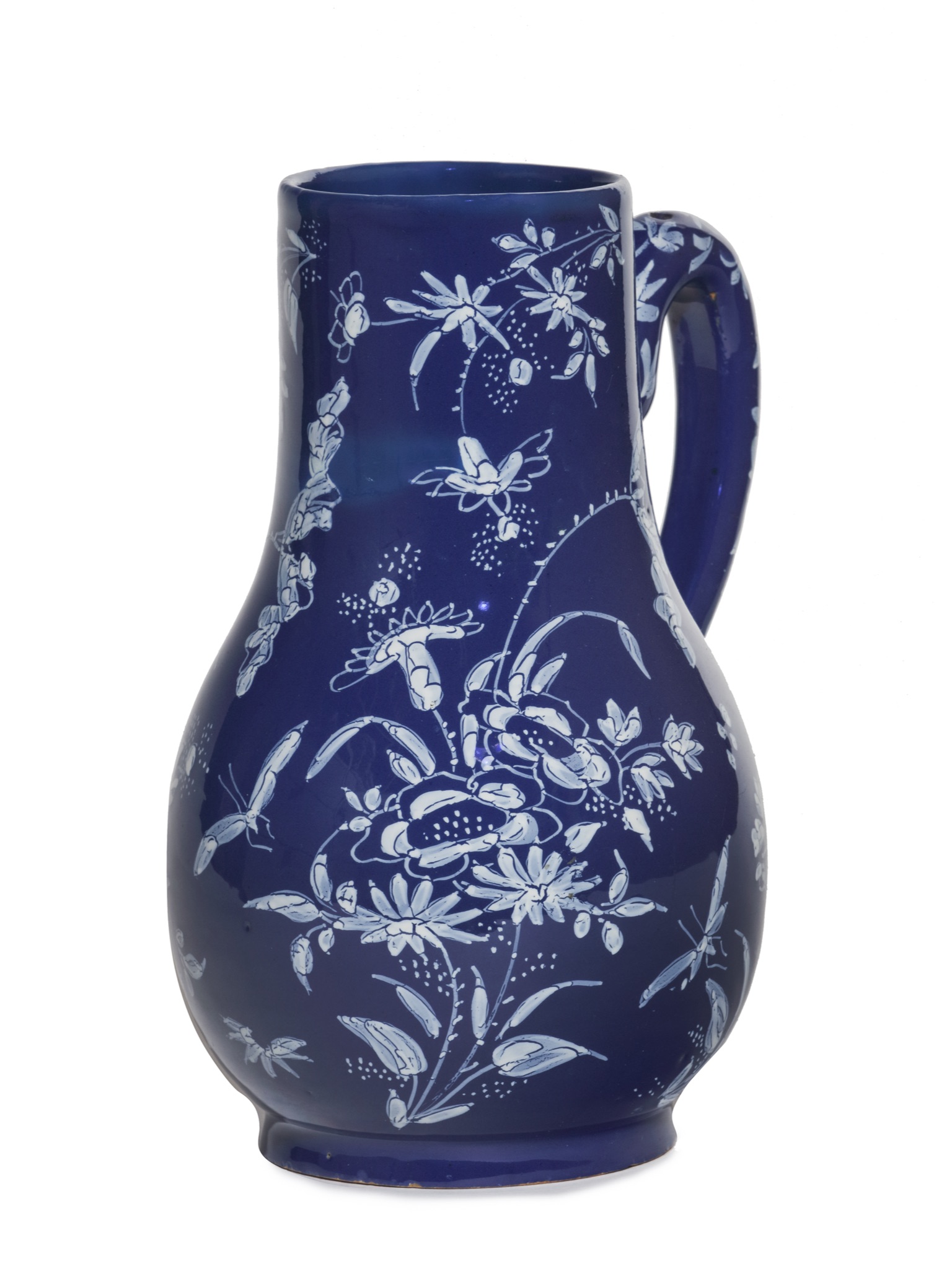![]()
Images on this website are licensed under a
Creative Commons Attribution-NoDerivs 3.0 Unported License.
OBJECT
D2414. Persian Blue Jug
Delft, circa 1700
Attributed to the De Paauw (The Peacock) factory
The rich blue ground painted in white on the ovoid body with several fluttering insects flying above it, amidst a profusion of flowering plants, on the neck with further insects around a floral spray, and on the loop handle with a scrolling vine and floral work.
DIMENSIONS
Height: 21.5 cm. (8.5 in.)
PROVENANCE
Abraham van der Meer (1927-2008) Collection, Amsterdam
NOTE
Delft and English potters drew inspiration from the vibrant blue, white, and yellow glazed wares produced in Nevers, France, between 1660 and 1680, known as bleu Persian. The Delftware that embraced the Persian blue ceramic style gained popularity around 1690, although surviving examples are rare.
This unique Delftware featured a blue glaze adorned with white or yellow Asian-style decorations, including water birds, flowers, lotuses, and peacocks. Inspired by the French ‘Nevers bleu’ products, faience makers in Nevers had produced wares with opaque yellow or blue glazes and delicate lace-like decorations between 1660-1680. French potters learned the colored ground technique from Italian colleagues in Nevers, with the term ‘berettino’ also referring to these French blue wares.
The ‘Persian blue’ color pattern, stemming from Iranian pottery workshops imitating Middle-Eastern wares, influenced the development of Delftware around 1690. De Paauw (The Peacock) factory perfected this technique, creating blue ground wares resembling the original Nevers ceramics with a depth of color and characteristic floral motifs.
Under David Kam’s leadership, De Paauw factory specialized in the Persian blue color scheme, reaching its peak in production during the late seventeenth century. The factory later adapted to the changing Delft pottery industry, transitioning to blue and white objects inspired by transitional and Kangxi porcelain around 1700. This ewer, showcasing the factory’s exceptional craftsmanship, exemplifies the innovative spirit that marked the beginning of the eighteenth century for De Paauw.









